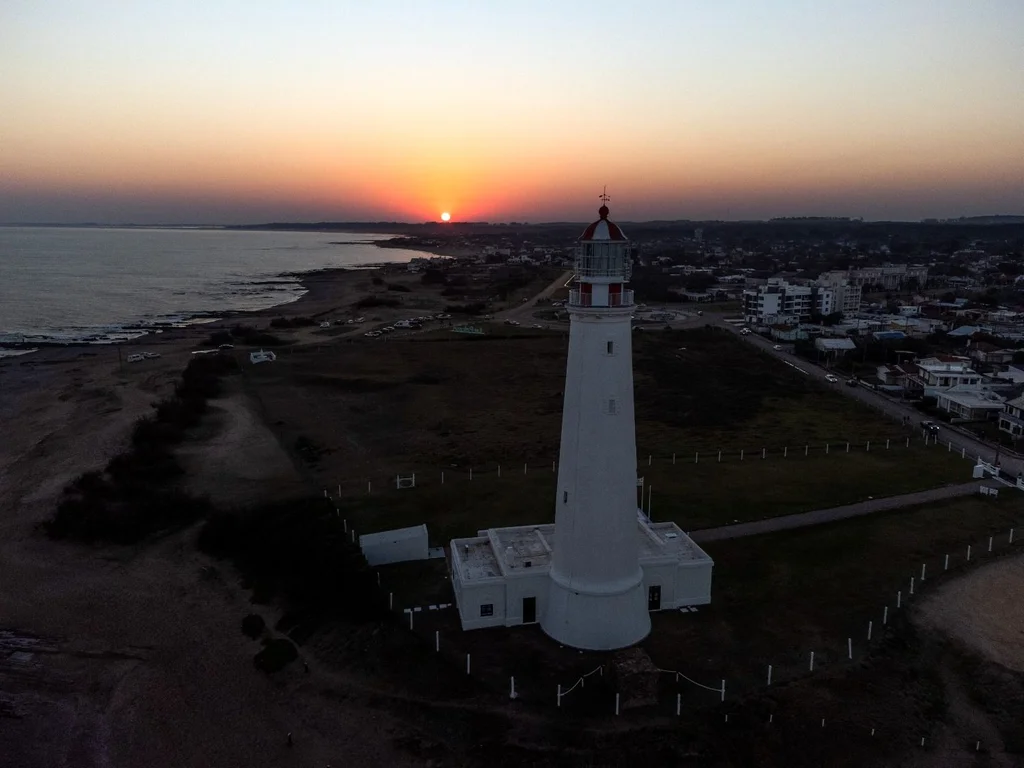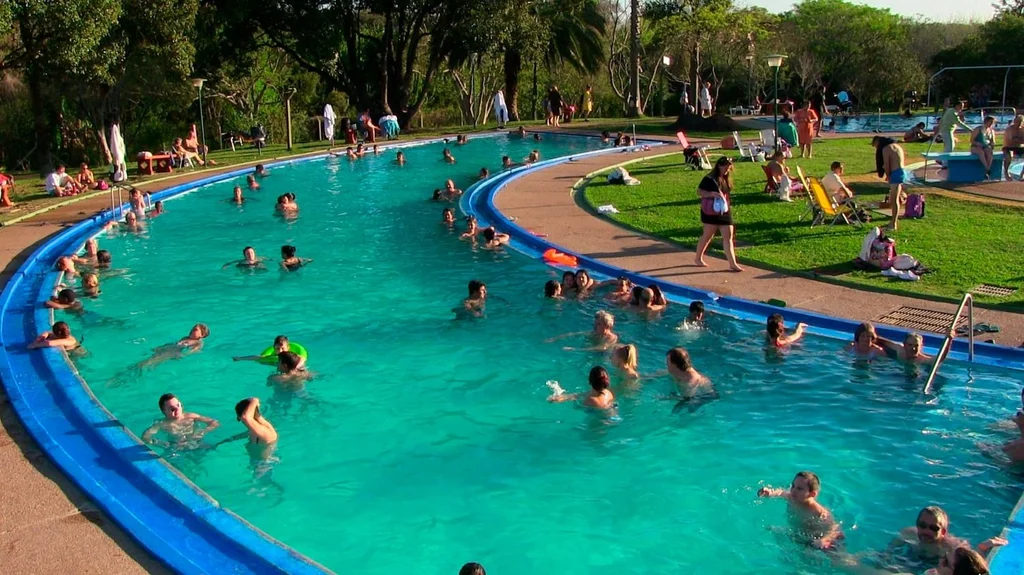Referents of the tourism sector at regional and national level met between Wednesday and Friday in Punta del Este to discuss the challenges facing tourism during the post-pandemic recovery stage. Potpromote coordination between the public and private sectors Y promote Uruguayan destinations as options of the whole year are some of the big goals.
In it Hotel Enjoy in Punta del Este was developed the 1st International Tourism Congress, within the framework of the 67th Regional Meeting for the Americas of the World Tourism Organization (UNWTO). During the activity, different specialists provided their vision on the main challenges that the sector will have in the face of the reactivation that is already taking place.
On Thursday, at the opening of the UNWTO Regional Meeting, the President of the Republic, Luis Lacalle Poumaintained that at this time “very important” for the world, the region and Uruguay, to be able to move forward and promote tourism activity “it will depend on the intelligence of the private sector to recruit the public sector and the intelligence and sense of duty of the public sector to help leverage and boost the private sector”. “My presence here refers to and compromises the ultimate,” she pointed out.
In turn, he said that in Uruguay it is necessary promote tourist destinations linked to wine and rural tourism. “Rural tourism has gained enormous relevance, people fleeing from the cities, because due to the covid issue they want to have distance, wants to have more contact with nature. Today Uruguay can offer a lot in that sense”, he pointed out.
For its part, Marina Cantera, president of the Uruguayan Chamber of Tourism (Camtur), told El Observador that holding the International Tourism Congress in Uruguay “puts the focus of all America” on the countryin “its health situation and that of tourism“found”very well positioned in the American context”.
“This is because of how the sector has been reactivating, in contrast to other countries that may be a little slower than us and the challenges that it poses to us as a tourism sector to precisely maintain the reactivation that we carry”, he expressed. And I add: “The important thing about this congress is that everyone can focus on the same thing, on working, thinking and analyzing together how we can get out of the situation we are in”.
The challenges of Uruguay
For Andrés Castellano, president of the Colonia Tourist Association (ATC), the great challenge facing Uruguay is “continue to coordinate public-private management efficiently”. Along these lines, he highlighted that from the pandemic a “important synergy” between public and private.
In turn, he stressed the need to be aware of the importance of the sector for the country’s economysince it is “one of its four engines”. In that sense, she said that the challenge is that if tomorrow I went back to “When an emergency situation appears —like the one there was— tourism has already won some issues”.
On the other hand, the president of the ATC stressed the importance “articulate very strongly” with the Ministry of Tourism (Mintur) and that Uruguay is “sell abroad”. “We have to go to a greater number of tourists than we perceive today, we have to seek the best benefit for tourism. We have to sell abroad, we have to be with very strong promotions in the south of Brazil and in Buenos airs“, I consider.
Municipality of Cologne
Along the same lines, it was stated Delvair Amarilla, president of the Rochense Tourism Corporation (CRT), who highlighted the importance of public-private articulation. The businesswoman indicated that “that is the most important strengthening on which we must work”.
“We must aim for public-private work, in the Destination Management Organizations (DMO), in being private-private articulated and that each territory has a reference organization to be orderly and professional and continue in this joint training so that among all the destinations seek how to attract more tourists”, he expressed.
On the other hand, he warned that the service sector is still “resentful” so you have to aim for one “reactivation”. “When you go out looking for tourists and you don’t have the right services, that’s not true, so there’s a lot of work to do”, he pointed out.
Flavia Lavecchia, head of the Salto Commercial and Industrial Center Tourism Commission (Ccisalto), said that the International Congress of Tourism was an instance in which it was possible to appreciate the “associativism, governance and articulated work between the public and the private”, and considered that the goal should be double the figure of 10 million tourists that is projected.
“Yes 20 million are coming, all the operators will come out and the whole country will be strengthened. There will be an increase in the jobs of the destinations and the spill that is generated. We must highlight the importance of this articulation and associativism that is really existing and is very real”, he stated.

Miguel Arregui
For Martín Laventure, Director of Tourism of the Municipality of Maldonadothe challenges that Uruguay faces have to do with “start to figure things out”. Along these lines, he pointed out that the country is facing “a unique opportunity” since although the tourism sector was “of those hardest hit by the crisis” is one of those “can have a quicker recovery and help the recovery of the economy and employment”.
“The position that the country already has for a long time but that has been improved by how the pandemic was treated makes Today we are in the window of the world. We have the challenge of air connectivity, breaking the seasonality of our destinations and generating complementary products”, he admitted.
In turn, he added that it is necessary for Uruguay to think of itself as a “destination country” and work “jointly between the different departments” with the same dynamics of work and governance with which it has been coming for a long time but aiming at “transmute it into concrete facts”.
departmental challenges
Castellanos reported that Colonia is working in a good way through public-private articulation with the challenge of “convening residents and investors”. “There are investments of scale approved and others to be approved. The + Colonia project is going to spill many jobs and the project of the Free Zone of Services of the Silver, also ”, he assured.
“I believe that the challenge is that we do this growth in an orderly manner and that we can, through this change in the employment matrix —because companies in the knowledge industry are going to be eradicated— be able to generate a better quality of life, better conditions and that the growth is anticipated and planned“, Held.

NICOLAS GARCIA / AFP
For Amarilla, the great challenge is to ensure that Rocha is not “just a sun and beach destination” but it is important to get entrepreneurs to consider that it is worth opening all year. “We must work Rocha not only in December, January and February and then see what happens, see what hotels are left open, see what services are available. We want Rocha all year round because the products are there and we have to work on it”, he pointed.
In Salto, the primary objective is to achieve the formation of a DMO. Lavecchia argued that “is a priority” and that from the Ccisalto an agreement was signed with the Mixed Technical Commission (CTM) of Salto Grande that aims to meet this need. “What we needed was a technician working for the formation of an OGD and all the directors supporting and working hard on it, so the challenge is the formation of a DMO the articulated work and associativism between public and private and private with private”, he expressed.
As far as deadlines are concerned, the tourist operator maintained that point to December 31, 2022 in order to have the OGD formed.

EFE / Rodrigo Garcia
Meanwhile, Laventure argued that it is important “reaffirm the way“What Maldonado has been going through in terms of what he is”much more than sun and beach and that the entire department has enormous possibilities from the tourist point of view”.
According to the Director of Tourism of the Fernandina commune, many people who visit Punta del Este choose the destination to live permanently or semi-permanentlyso the challenge lies in “continue growing and transforming the city” without “lose the different” what people are looking for: “Quality of life, respect for the environment and the warmth of the people”.
“It is inexorable that each of our destinations becomes year-round places, but we must be very careful with this growth and not lose the essence”, concluded Laventure.


















